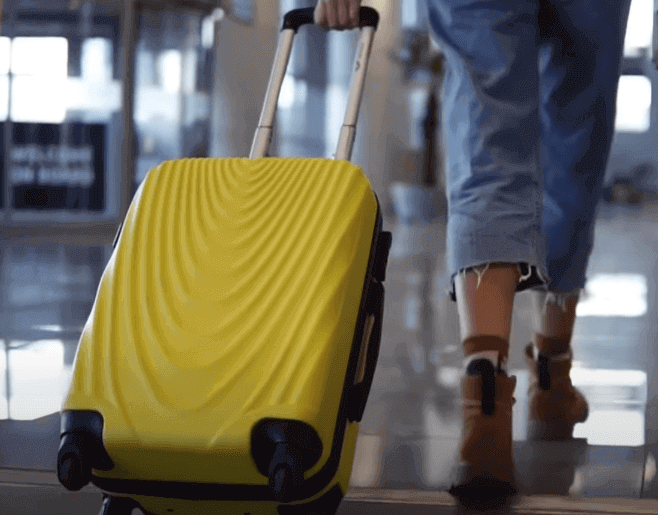Last Updated on November 24, 2023 by Rose Morah
It is possible to travel with frozen food on a plane, but it also depends on how you pack it, the type of food you are carrying, and where you are going.
Personally, I have traveled domestically with frozen food many times and on international trips coming from South America to the US.
I have also seen many people travel with frozen things with no issues as long as they are well-packed.
| NOTE: If you doubt everything will go smoothly at the airport, I’d recommend contacting the airline to confirm. You will not have problems with TSA if you follow their guidelines. |
Tips for packing frozen food in checked luggage
1. Freeze the food well in advance
Freezing the food in advance ensures that it lasts longer while still frozen.
You will notice a big difference when traveling with food that is not frozen in advance vs that which is well frozen before you pack it.
Also, ensure you know what is allowed by TSA.
2. Get a good cooler
A good cooler will help keep the food cold, especially when you’re traveling for many hours.
Additionally, it helps in case of flight delays.
However, I’d recommend you avoid coolers that are not allowed on a plane. A good example is styrofoam coolers.
Also, avoid coolers that are made up of polystyrene products.
3. Know how to pack the food in the cooler
The following are tips for packing food in the cooler:
- If you plan to use dry ice, ensure that the weight adheres to the airline’s requirements.
- Ensure that the ice or the ice packs in the cooler is completely frozen.
- Make sure the food is completely sealed.
- Keep your food cooked or cold.
- Label the package. Indicate the weight of the ice. Also, add the food description.
- If it is dry or carbon dioxide solid, ensure that you also indicate that.
- Get waterproof packaging because the ice may slowly start to melt.
- Pack the cooler last, before going to the airport.
- When carrying dry ice, go through TSA’s guidelines on that.
I also recommend going through how to keep perishable food fresh & frozen when traveling for long hours. The article provides detailed information on how to properly pack your cooler to ensure that the food stays cold for a longer time.
4. Find out if it makes sense to carry the frozen food in your carry-on.
It’s important to note that carrying frozen food in your carry-on may have its cons.
The following are a few things to take note of:
- TSA may want to open the cooler if they feel like they need to do an additional screening.
Some may end up tearing it all apart thus messing up with the package.
However, this should not scare you, I have traveled next to people who carried up to 39 lbs of bacon and other things in the cooler.
- In most cases, it is better to have frozen food transported in the cargo because no one will try to open it.
Additionally, the food usually stays frozen for longer because the cargo is usually colder, or with lower temperatures.
You may not be allowed to pass your frozen food through TSA:
- If the ice or ice packs are not completely frozen. So, ensure that your cooler or container does not have melted ice at the bottom.
- If the dry ice you are using does not meet the airline’s weight limit.
See also: 5 Healthy Non-refrigerated Road Trip Snacks To Keep You Awake.
Final Words
It is worth noting that before embarking on a journey with perishable food, consider going through the Transport Security Administration (TSA) rules and guidelines.
This will help you know the types of foods allowed on your checked luggage and those that are not.
According to TSA guidelines, any food items brought through security should be natural foods like vegetables or fruits, whole foods, or be packed in a container.
TSA also have an app that helps passengers search whether specific food types are allowed.
Additionally, check the airline’s specific restrictions and regulations. Each airline interprets the TSA’s frozen policy differently.
Lastly, travel regulations on frozen foods differ from country to country. Therefore, consider contacting the airline’s carrier customer service for specifics on how you should travel with frozen food.




